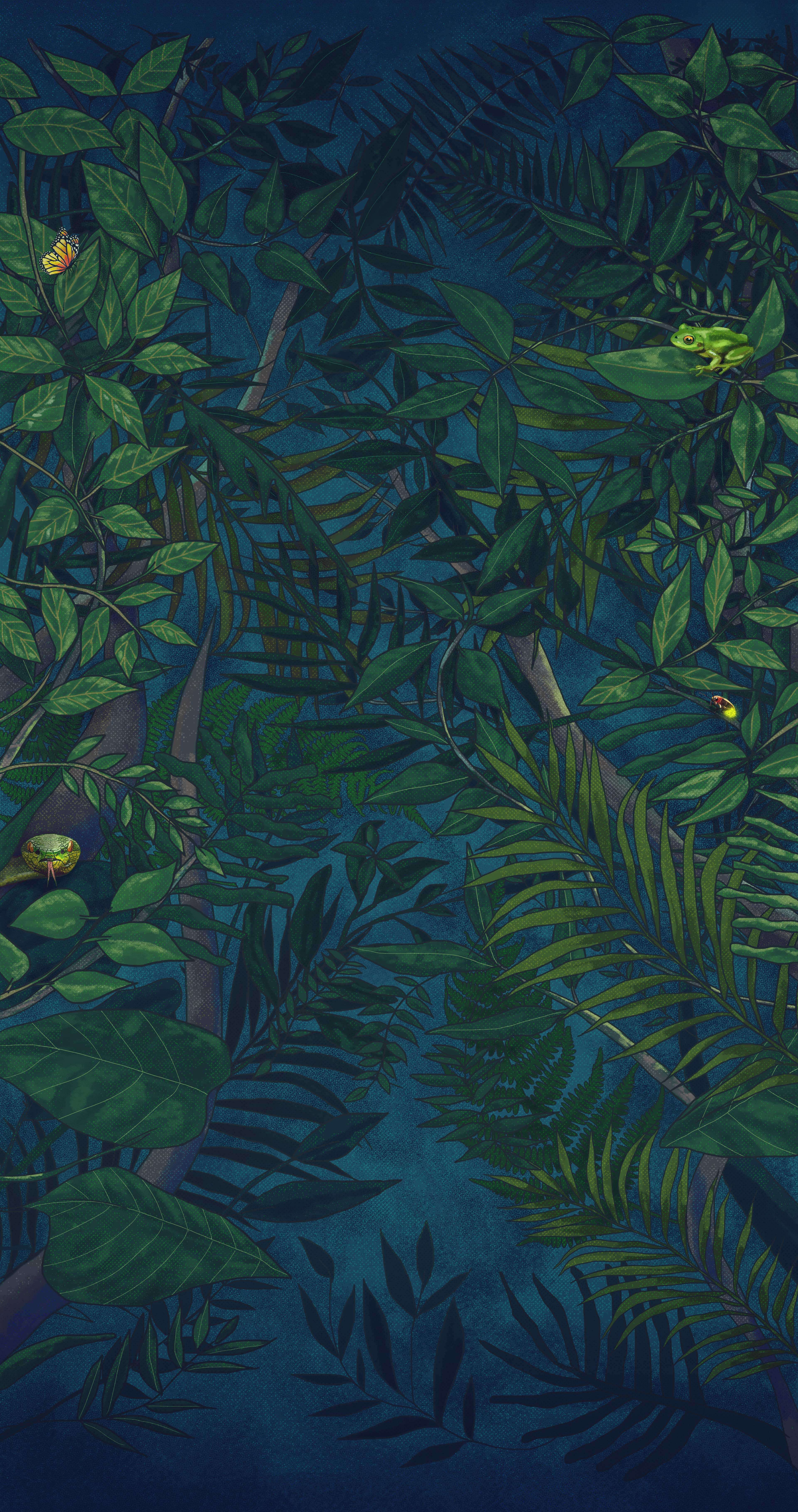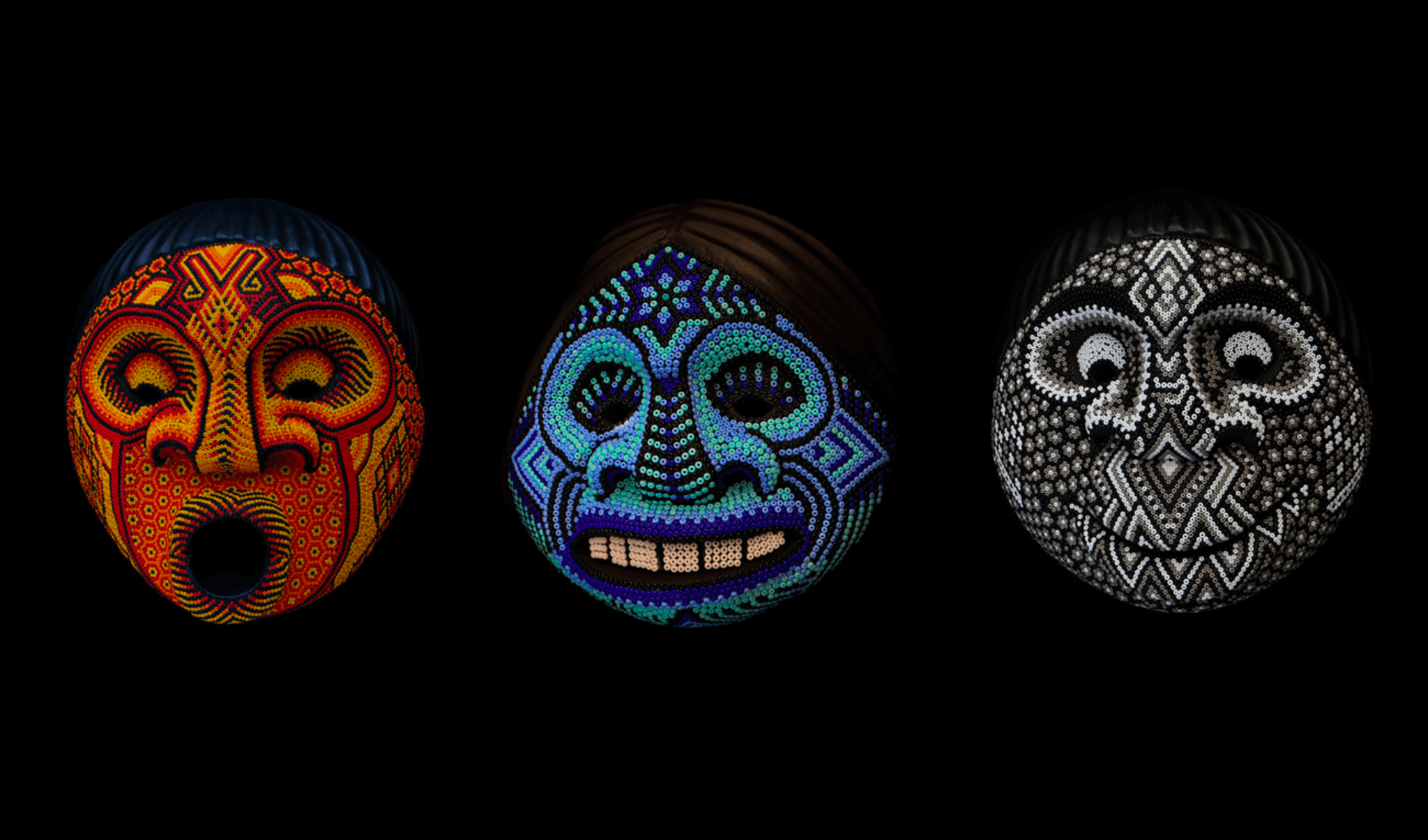Every year, in the weeks before Ash Wednesday, Gerardo Chasoy —an indigenous man from the Inga and Kamëntsá peoples in the Sibundoy Valley, who lives in the Colombian department of Putumayo— creates the masks the members of the troupes will wear in what is known in their native language as “The Big Day” or Bëtscnaté. The Big Day is a traditional and religious celebration where the indigenous people of the valley ask for forgiveness and reminisce, through parades and dances, one of the most difficult moments in history: slavery during the colony.
During these weeks of the year, Gerardo Chasoy’s routine is always the same: he chooses a piece of white willow wood, rosewood or yamuro (a native tree). After cutting it, he sands it until the surface is smooth, and only then, he starts carving patiently. First the eyes, then the mouth, until the expression of a new face is defined. But the masks he is carving now are not only characters for the Carnival of Forgiveness, the masks he is carving try to shape the feelings of the pandemics, those that forced Bëtscnaté to be suspended to avoid spreading the virus. Those faces now try to recall the pain for the loss of so many friends and family, and the fear of a new disease, but also the hope of overcome it.
“To create a mask, the one thing to do is to feel the magic of wanting to express something through art. What we tell through the masks is the indigenous everyday life: joy, sadness, sorrow, tears, nature”, tells us Gerardo Chasoy, while describing the masks decorating on of the walls of his workshop in the Sibundoy Valley, in Colombia’s thick rain forest, itself part of the large Amazon River basin, and where more than half is indigenous population.
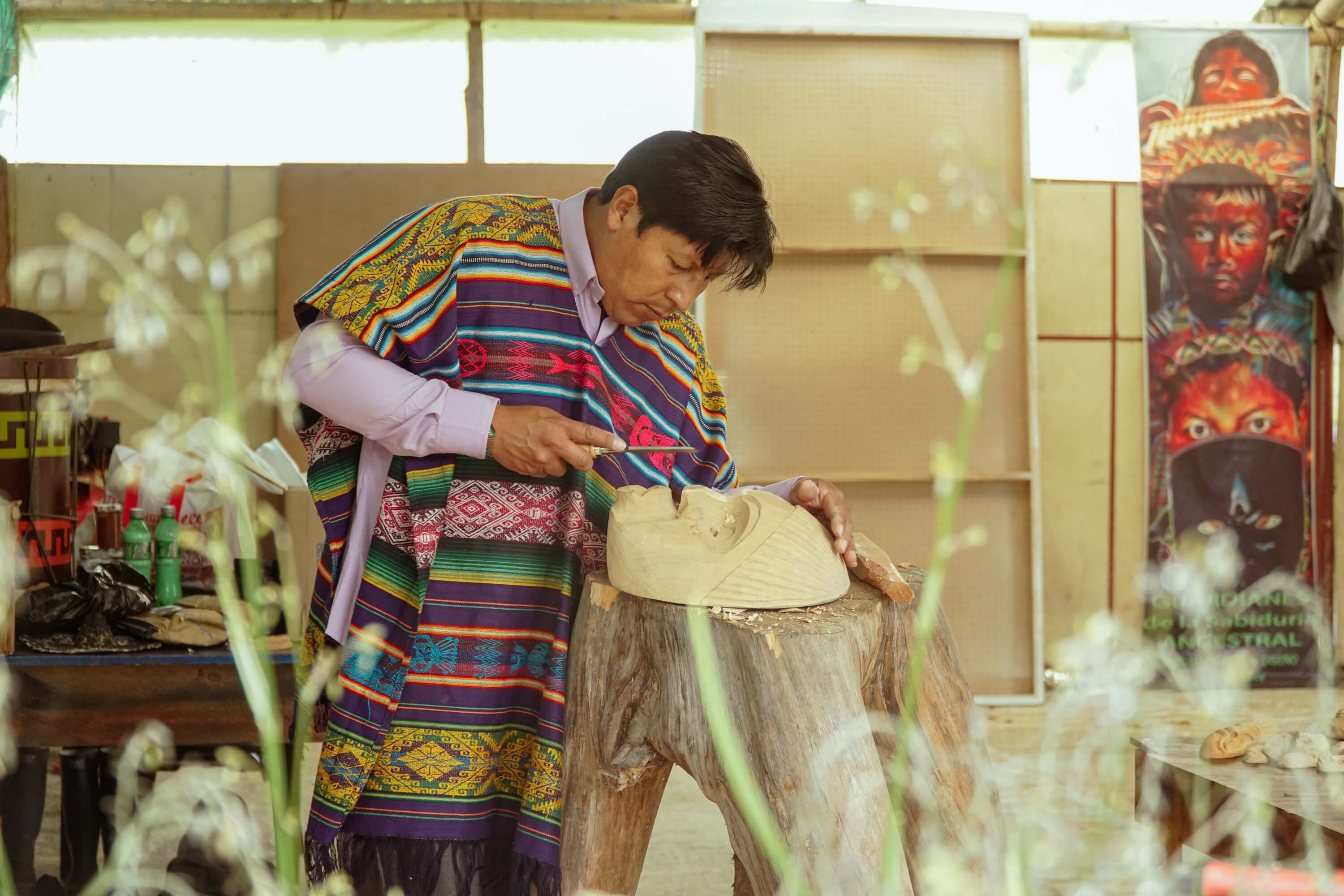 THE PROCESS. Gerardo Chasoy makes his masks from pieces of white willow, rosewood or yarumo, tree species that grow in Putumayo.
THE PROCESS. Gerardo Chasoy makes his masks from pieces of white willow, rosewood or yarumo, tree species that grow in Putumayo.And, as he’s done every Monday before Ash Wednesday for so long, in this year where the pandemic hit everything, Gerardo Chasoy hung and displayed in his workshop the masks for Bëtscnaté. The shape, the colors, and each of the details were the usual ones, but something did change. At their core, all feelings were pierced by a disease that first cornered them, and then gave way to the need to self-organize to take refuge in plants: “fear, death, uncertainty, but also the admiration and strength of traditional medicine, which is a breath of life. All of this is what the coronavirus brought to indigenous peoples,” he explained.
The new disease, Covid-19, reached Putumayo on May 10, 2020. This is what Colombian official records show: the first patient was reported almost a month after in Bogotá, the capital city. The pandemic shook everything in the communities. The festive feelings of the indigenous masks gave way to other expressions. Local authorities were forced to suspend the Carnival of Forgiveness in the streets. This time there were no dances, no large parades. Bëtscnaté had to be experienced and celebrated from each home, in isolation. Forced by the emergency, ancestral leaders changed an ancient cultural tradition in order to preserve lives.
Jesús Quinchoa, indigenous governor of Inga de Colón, one of the four municipalities that make up the Sibundoy Valley, says that “the expansion of the pandemic for indigenous communities felt as if a bucket of cold water had fallen on us. It completely changed our way of life. He had to restrict Bëtscnaté because as governor he could not allow the community to be exposed to become infected. For us it was quite difficult because our “Big Day” is the beginning of the New Year. The families felt very sad for not being able to visit their friends on such an important date.”
The pandemics forced the Inga and Kamëntsá to break one of the most important principles of their ancestral essence. Family rituals, taking care of the crops in the chacra, the sale of harvested products in the market, and spaces as sacred as the shinyak (the home fireplace) —where the traditional knowledge is shared in group—, had to be postponed.
Traditional kitchens in Colombian indigenous peoples are an expression of multiculturality. It is there were food is prepared and the families gather around the fire. For the Kamëntsá, family cohesion spins around shinyak, the fire, which is the fundamental element providing heat, light, and protection.
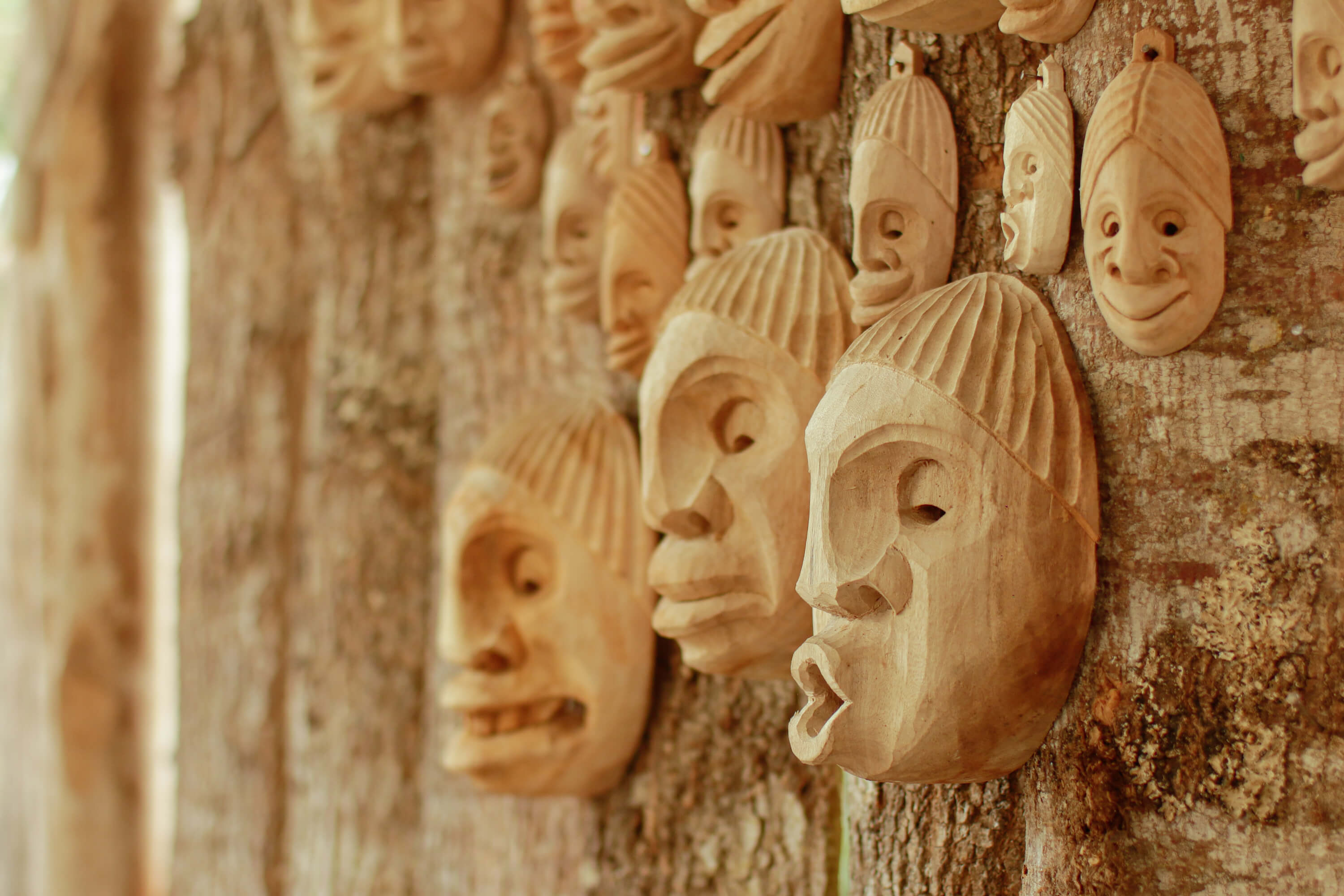 CORONAVIRUS PHASES. For this journalistic series, Gerardo Chasoy created three masks representing uncertainty, fear and hope to overcome the disease.
CORONAVIRUS PHASES. For this journalistic series, Gerardo Chasoy created three masks representing uncertainty, fear and hope to overcome the disease.Judy Jacanamajoy, an anthropologist from the Sibundoy Valley, says spirituality has to be experienced in a community, and stopping those spaces for dialogue generates irreparable damage. “Before the pandemic, shinyak was shared among groups of many people. The spiritual aspect is vital in our community, and with the pandemic, we were not able to receive people seeking to orient their family path or to heal. This is also done when the traditional medicine is practice with yagé from the sacred liana (called ayahuasca in other countries). With meetings being banned, it was difficult to keep a balance,” explained the indigenous professional.
While uncertain and ignoring what the spread of the virus really meant in Colombia (as the information never arrived in the territory in any indigenous language), the Sibundoy Ingas and Kamëntsá indigenous used what has been their main survival tool throughout their history: the land itself. “We used plants to fight Covid-19. With yagé we purged ourselves and then we cleansed with copal, incense and nettle essences, eucalyptus, rosewood, and other plants from our botanical garden,” indicated indigenous taita Juan Bautista.
And it is precisely “the breath of life”, as Gerardo Chasoy calls traditional medicine, which not only allowed many indigenous people to take refuge in the plants they have historically used to protect themselves from diseases and their symptoms, but also helped them to generate a confidence that neither the masks nor the quarantine gave them. “It was difficult because we needed to control the fear, there was a lot of misinformation on the subject and people felt unprotected. So we came up with our own ways to protect ourselves. I thought, ‘we can get it at any time, but we need have to believe that we are not going to die,’” adds taita Juan Bautista, who still cares for and helps those infected.
Until March 2021, the coronavirus had affected 80 indigenous peoples in Colombia, and according to the National Institute of Health (INS) at least 1,185 natives from different ethnic groups had died of Covid-19, so far. The reports indicates that 37,522 were infected; and only in the case of Putumayo, up that moment, more than 8,000 infections and 320 fatal victims were reported.
The sense of community and the spiritual strength that characterize indigenous peoples were the main allies in a battle being fought against death.
Indigenous Guard Against Coronavirus
Although the first coronavirus infection in Putumayo wasn’t recorded until May 10, back in March —one month after the first case was confirmed in Colombia— the indigenous peoples had already organized an Indigenous Guard watching over the roads accessing their territories, to prevent foreign people from entering. And as they had done before in emergency situations, more than 60,000 members of the ancient army left their traditional wood canes and were armed with small alcohol gel bottles and face masks to safeguard the territory.
In the Sibundoy Valley, around 160 members of the Indigenous Guard imposed control shifts in the border since March 25. For almost two months, they took 12-hour shifts or longer to make sure nobody entered their lands without the necessary protection measures and encouraged local inhabitants to comply with the strict quarantine imposed by the Colombian government.
In record time, as told by Luis Jansasoy from the Sibundoy Valley Indigenous Guard, they had to learn the scope of the enemy they were facing, and through loudspeakers and the local radio (such as Radio Wayra) explained each inhabitant in the Valley and in the department that their very life was in danger.
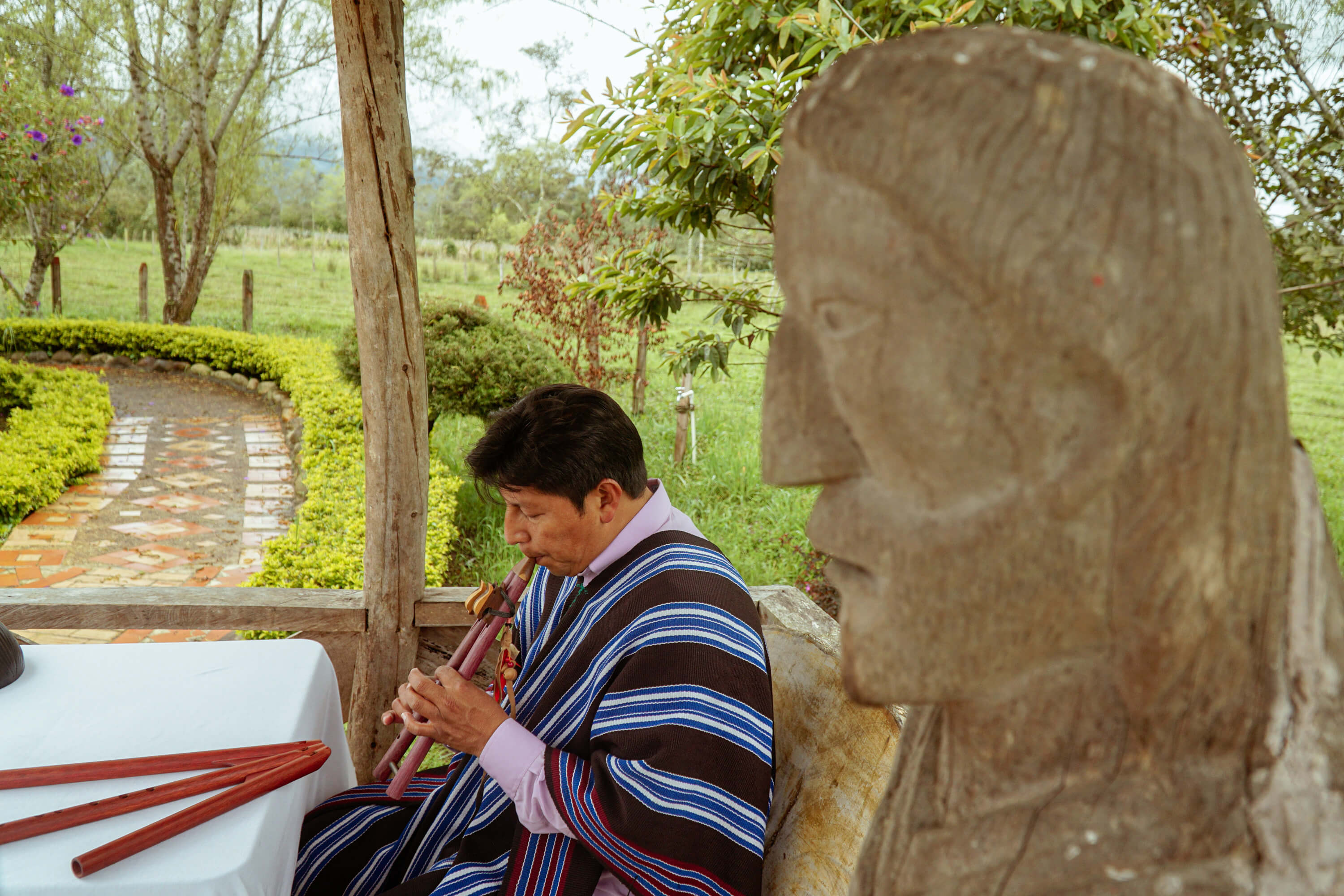 CHALLENGES. One of the things that most confused the community where Gerardo Chasoy lives was how quickly they had to get to know their new enemy, the coronavirus.
CHALLENGES. One of the things that most confused the community where Gerardo Chasoy lives was how quickly they had to get to know their new enemy, the coronavirus.“It was quite difficult to control the population; people went out without a facemask and with no protection. Our job was to make campaigns to prevent Covid-19. We explained how to wash their hands, how to use a facemask and gel alcohol; we went to places with crowds to disperse them. We practically trained in the midst of the difficult situation of the disease,” Jansasoy narrates.
Throughout Putumayo, the strict curfew was between 6:00pm and 5:00am, and was in effect for more than three months. Among the strategies, besides declaring a mandatory quarantine, the Department’s Government distributed 10,035 food aids, and 1,049 kits to the indigenous populations in Alto and Bajo Putumayo. The community also managed to barter the crops of the farms and put into practice one of its most important principles: solidarity, or jenajabuacham, the principle of mutual help.
A tragedy waiting to happen
Everything around the advance of the pandemics was surrounded by uncertainty. For a year, science had to face an unknown enemy, but indigenous peoples were not surprised by this new virus. The indigenous artist Gerardo Chasoy, Judy Jacanamajoy and taita Juan Bautista agree on one idea: the wise men knew that something like this would appear in the world because of the harmful relation of humankind towards Earth.
“This is a very deep idea from their cosmovision. What the taitas felt through the energy was a strong change coming that was going to shake the whole planet. They spoke about the need to go back to the earth, because even though we always talk about the importance of protecting and caring for Mother Earth, we need to let her be, to let her feel. It is a strong call to all humankind for awareness,” explains Judy Jacanamajoy.
The fear of death, the uncertainty and the strength of an indigenous people that protected itself with its guardians, that took refuge in plants, and preserved the life of its community above all, are memories tola in the Sibundoy Valley. They are hardly the words of a past that has not left, because the virus is still striking. Gerardo Chasoy’s masks tell these memories, the pain from the loss, the shift of fear and despair to hope and the comfort of living in community. These pieces, the artist says, immortalize his people’s feelings facing an unknown virus; but he’s no longer afraid, and says he’s rather grateful to the earth, because it reminded him of the importance of returning to her.
